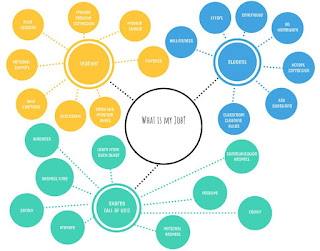Assessing my Assessing - Unit 8 Reflections
It was hard for me to assess
what my focus should be, so I decided that several foci within the
unit were appropriate.
Assessment Cartoon
References
Brown, D. & Lee, H. (2015) Teaching by Principles: An Interactive Approach to Language Pedagogy. Upper Saddle River: Pearson
The overall focus for this week was on assessment. I do not think I have any
specific quotes or areas of our text to highlight or discuss this
week, but the text reference is listed below because my thoughts are
a compilation (and perhaps an argument both for and against) of the
readings. There are several things that are developing in my mind,
so this week I am giving you a list of what they are.
- I did not know that assessments had categories. I use diagnostic, formative, and summative assessments every day. In life, in gardening (one of my hobbies), at home, at work. They are everywhere and everyone uses them, whether they realize it or not. I am glad to have learned the categories of assessment, because I think it will help me be more effective, regardless of the arena in which I am conducting an assessment.
- Not every assessment is effective for the intended purpose and not everyone uses assessment tools appropriately.
- I cannot remember a specific discussion in the course notes or the text that would discuss the idea that the same assessment may be used for different purposes, but I have been thinking about what that might look like. For example, in the lesson plan we developed this week (my partner and I) , we created a rubric as a formal summative assessment for the lesson. I do think that it could also be used a diagnostic tool for the creation of a follow-up lesson plan. Knowing how the learners are able to manage the requirements of the assignment they are responsible to complete, can provide insight into how to move to the next lesson. Rubics can also be used as a formative tool. I have access to the course rubric for the blog that I am writing right now, and when I refer to it to understand what success looks like, I can use it as a tool for formative assessment – I may find ways to adjust to ensure that I am succcessful at my posts – not just for reading, but for the purpose of grading. That might also be termed as action oriented assessment. What I discover through the self assessment using the rubric could result in my making changes to how I complete this assignment. The the assessment has done several things: I have actually first used it as a formative tool to develop my blog posts, then as a summative tool to evaluate my blog as if I were the instructor, and then I might even use it diagnostically to determine what could be done in the next post. I realize that I am blurring the lines between the categories, but I am comfortable with that, because I am able to identify something I did not know before – that there are lines that seperate/differentiate, and what those lines entail.
- Finally, I think it is worth noting that not all assessments work well for determining what a teacher might want to know. If there is a concern, you may not be able to attribute it to the learner and what the assessement shows – it might need to be attributed to the assessment itself. This is a a good reminder to ensure that multiple assessment tools/methods are used to ensure fairness (and perhaps legitimacy) in assessing. In the same way that learners have different learning styles, and those styles may be impacted by cultural norms (for them and you), along with any trauma or hardship that might have been experienced (or a vast array of other factors), assessements are not all equipped to work with every learner.
It has
been a fun week thinking about assessment. So, I included a link to a fun
cartoon that I have found on a Scholastic website - it conveys the importance of
understanding the value of assessing fairly, not equally. They are
not the same thing.
Enjoy!
Assessment Cartoon
References
Brown, D. & Lee, H. (2015) Teaching by Principles: An Interactive Approach to Language Pedagogy. Upper Saddle River: Pearson

Comments
Post a Comment